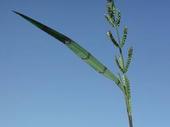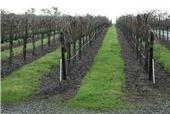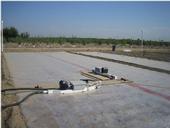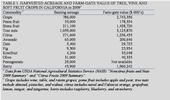- Author: Brad Hanson

I had the opportunity last week to attend the Weed Science Society of America (WSSA) annual meeting which was held in Portland OR this year. The meeting was really interesting as usual with many interesting oral and poster research presentations.
Two UCD weed scientists, Joe DiTomasso and Kassim Al-Khatib, were honored with the Society's Fellow Award - the highest level of recognition given by the group. More info on this award can be found here: http://www.wssa.net/WSSA/PressRoom/WSSA-2011-AwardWinners.htm
I've attached a research report presented by a UCD...
- Author: Brad Hanson

Reposted from a paper presented at the 59th annual Lodi Grape Day (February 1, 2011).
Brad Hanson, Cooperative Extension Weed Specialist, UC Davis
What makes a weed a weed? Better yet, what makes a weed a "tough weed"? Or even better still, what makes a tough weed tough to control? Confused yet?
One definition of agricultural weeds that I like is "a plant that is especially successful at colonizing and proliferating in disturbed, but potentially productive areas". Most vineyards fall into the category of "disturbed, but productive"...
- Author: Brad Hanson
Weed management in non-crop areas presents very different problems compared to highly managed agricultural and horticultural crop situations. Invasive weeds can displace native vegetation (or preferred naturalized plants), reduce economic or recreational opportunities, alter fire regimes and generally cause problems with ecosystem services on a local, watershed, and regional basis.
Further complicating the problem of noxious and invasive weeds is the difficulty in implementing control strategies on vast areas of often difficult terrain. For example, yellow starthistle (Centaurea solstitialis) has invaded over 12 million acres in California alone!
- Author: Brad Hanson

During the last few years, one of my core research areas has included several projects related to preplant soil fumigation in collaboration with a number of UC, USDA-ARS, and industry researchers. I touched on soil fumigants a bit a few weeks ago shortly after methyl iodide was registered by DPR (link to previos post). Today I thought I’d touch upon research results related to minimizing emissions of two of the most widely used methyl bromide alternatives, 1,3-dichloropropene and chloropicrin.
Soil fumigation is used prior to planting a number of high value crops in California. One of the most widely used soil fumigants, methyl bromide,...
- Author: Brad Hanson

A few months ago I compiled some statistics on the acreage and value of tree and vine crops in California and put together a simple map of where the main production areas are located. One caveat to this map is that I only had access to land use data layers for the Central Valley counties and some Bay area and Central Coast areas. Therefore, this map does not show orchards and vineyards in Southern California or the Desert growing regions which are very important for some crops in the chart below the map.
These crops all fall under the label of "specialty crops" although some of them have fairly substantial acreage. One of the things I found most interesting in looking at these data compared to a few years ago is the...


